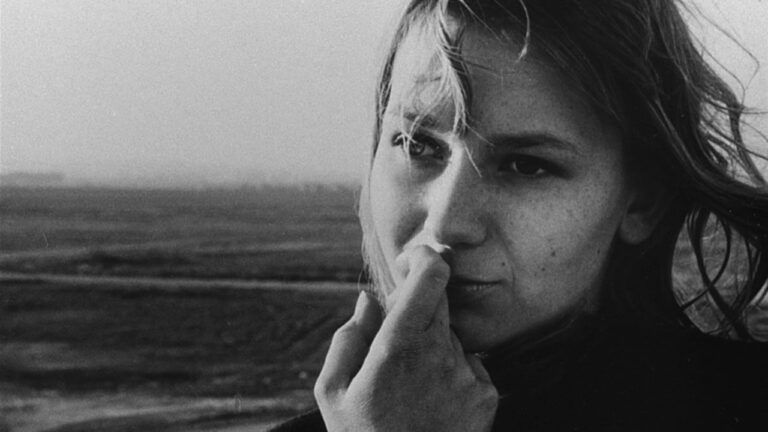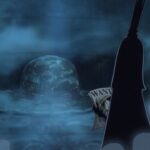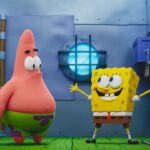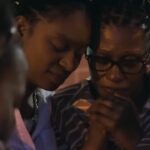Chris Marker’s ‘La Jetée’ stands as one of the most concentrated explorations of time and memory ever committed to film. The movie was made in 1962, and it is composed almost entirely of still photographs, forming a sequence of arrested moments through which a fragmented story of love, loss, and recurrence unfolds. Within its twenty-eight minutes, Marker dismantles the continuity of cinema, creating a film that lives between movement and stasis, between memory and projection.
The narrative unfolds after a third world war, in a Paris reduced to ruins and darkness, where survivors live underground. Scientists conduct time experiments to contact the past and future, hoping to find a remedy for the devastated present. From among the prisoners, they choose a man who is haunted by an image from his childhood, a woman’s face, and the sight of a man dying on the observation pier at Orly Airport. This remembered image becomes his anchor across time.
The Portrayal of Circular Narrative by Chris Marker
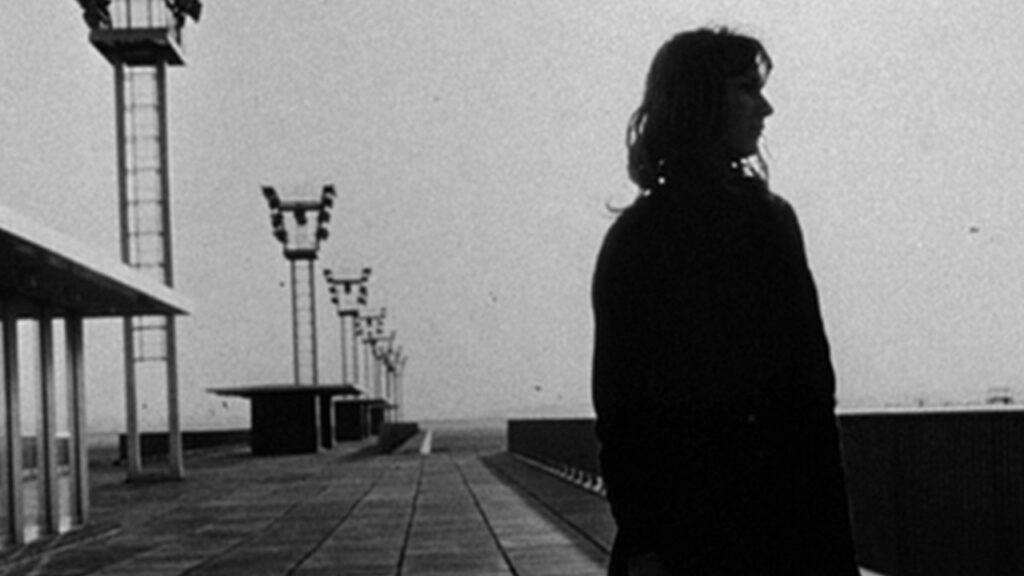
The structure of La Jetée is circular, as we see the protagonist’s journey through past, present, and future begins and ends at the same point. The pier where his childhood memory originates, and this circular form replaces linear storytelling with recurrence, evoking the idea that time folds back on itself. The man’s memory of witnessing a death as a child becomes the moment of his own death as an adult.
In that closed loop, memory and destiny merge. The film’s science fiction premise, with its experiments and time travel, serves as a framework through which Marker examines human perception, how memory constructs identity, and how the mind revisits the same images in search of meaning.
The most striking feature is its form, as the film is told through still photographs, interrupted only once by movement when the woman opens her eyes. This moment is brief and almost imperceptible, which redefines the meaning of cinematic life. Movement, when it finally appears, feels miraculous precisely because the rest of the film denies it.
Marker transforms the still image into a vehicle for duration; each photograph carries the weight of time’s absence. As viewers, we understand the story as we fill the gaps between frames, while creating motion internally rather than visually. The technique reveals that memory itself functions through stillness, through frozen instants that persist after the flow of time has passed. The photographs, silent but charged, resemble the fragments through which the mind recalls experience.
Sound and narration replace conventional dialogue. The narration unfolds with deliberate neutrality, and the layered sounds of machinery, indistinct voices, and background resonance place the narrative at the meeting point of external reality and mental space. The absence of spoken exchange heightens the sense of isolation. The man’s relationship with the woman in the past unfolds through looks and gestures, never through words. Their connection, tender and momentary, becomes the one space where the ruins of time give way to human warmth.
The photographs of the woman’s face, soft light across her features, her eyes closed, the faint movement of her hair, stand as symbols of an unreachable peace. When the man later chooses to return to her rather than remain with the beings of the future who offer him safety, it is not an act of heroism but of inevitability. Love and memory have become indistinguishable from fate.
From Postwar Ruin to Timeless Reflection in the Film

La Jetée belongs to the postwar tradition that questions the continuity of history and identity. Made in a decade marked by nuclear anxiety and the aftermath of global conflict, it reflects the fragility of human civilization and the persistence of the imagination that tries to outlast it.
The underground survivors’ attempts to exploit time are acts of desperation, scientific yet hopeless. Marker’s treatment of these experiments is not technical but metaphysical. The time machine is unseen, existing only through narration and suggestion. What matters is not how the man travels through time but what the journey reveals about perception itself. The past, once entered, is no longer stable. It becomes another layer of the present, alive only through recollection.
The film’s ending completes its closed structure. As the man runs toward the woman at Orly, time collapses into recognition. The child who witnessed the scene, the man who remembers it, and the dying figure on the pier are the same person. This moment does not resolve the story but seals it. The inevitability of his return to that image mirrors the nature of memory: to remember is to reenact what cannot be changed. The cycle between past and present becomes both the condition of human consciousness and the tragedy that defines it. La Jetée achieves the rare condition of turning limitation into revelation.
By removing movement, Marker exposes the essence of cinema, the impression of time suspended between images. Each photograph holds not just a fragment of a story but the trace of existence itself. The film’s simplicity conceals its depth; it is about the human need to locate meaning within the ruins of time, about how love becomes the only form of continuity when everything else decays.
